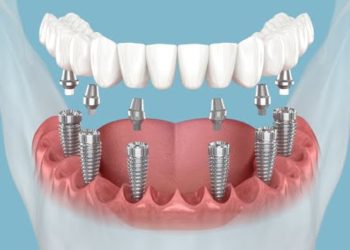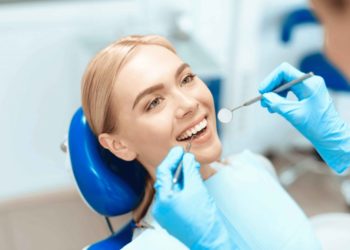The Jobson Horne Probe is a specialized tool widely used in ear care for the removal of earwax and foreign objects from the ear canal. Known for it’s looped end, this instrument allows for gentle and precise extraction, making it a staple in both clinical and at-home ear care routines. It’s effectiveness and simplicity make it a preferred choice for audiologists and healthcare professionals.
Historical Background
The Jobson Horne Probe has a rich history in medical practice. Originally designed in the 19th century, it was named after Dr. Jobson Horne, who first introduced this tool as a safer and more effective alternative for ear cleaning.
Over the decades, the Jobson Horne Probe has seen several iterations aimed at improving it’s safety and efficacy. Early versions were made of different materials, including metal and wood, but modern probes are typically constructed from medical-grade stainless steel or plastic, offering better durability and hygiene.
Significant milestones include the introduction of disposable probes to further reduce the risk of cross-contamination and the development of ergonomic handles to enhance user comfort and control.
These advancements have cemented the probe’s role in both clinical and home settings, reflecting it’s adaptability and the continuous efforts to improve patient care.
Key Features and Benefits
The Jobson Horne Probe stands out due to several unique features. It’s looped end is designed to scoop out earwax without pushing it further into the ear canal. This design minimizes the risk of damaging the delicate ear structures. Additionally, the probe’s long handle provides better control and precision during procedures.
Benefits for Healthcare Professionals:
- Precision: The design allows for accurate removal of earwax and foreign objects.
- Safety: Minimizes the risk of injury to the ear canal or eardrum.
- Versatility: Suitable for a variety of ear care procedures, enhancing it’s utility in clinical settings.
Benefits for Patients:
- Comfort: The gentle removal process is less invasive and more comfortable.
- Effectiveness: Ensures thorough cleaning, reducing the frequency of ear blockages and related issues.
Proper Usage Techniques
Using the Jobson Horne Probe correctly is crucial for it’s effectiveness and safety. Here’s a step-by-step guide:
- Preparation: Ensure the probe is sterilized and your hands are clean. Position the patient comfortably with adequate lighting. Using an Otolight can provide additional illumination, making it easier to see inside the ear canal.
- Inspection: Examine the ear canal using an otoscope to identify the location and amount of earwax.
- Insertion: Gently insert the looped end of the probe into the ear canal without forcing it.
- Removal: Carefully scoop out the earwax using a gentle, outward motion. Repeat as necessary, checking with an otoscope after each attempt.
- Final Check: Once the ear canal is clear, conduct a final inspection to ensure no wax remains.
Safety Precautions
While the Jobson Horne Probe is designed for safety, improper use can lead to complications. Here are some key precautions:
- Avoid Deep Insertion: Do not insert the probe too deeply into the ear canal to prevent damage to the eardrum.
- Gentle Movements: Use gentle, controlled movements to avoid scraping the ear canal.
- Regular Inspection: Frequently check the progress with an otoscope to ensure safe and effective removal.
- Seek Professional Help: If you encounter resistance or the earwax is too hard, seek assistance from a healthcare professional.
To further ensure safe use of the Jobson Horne Probe, it is important to be aware of the potential risks associated with improper handling. Over-insertion or aggressive use can lead to abrasions or perforation of the eardrum, which can result in pain, hearing loss, or infection.
To minimize these risks, users should avoid using the probe if they are experiencing any ear pain, discharge, or signs of an ear infection. It is also advisable to avoid using the probe on individuals with a history of ear surgery or chronic ear conditions without professional guidance. Additionally, using the probe in conjunction with ear drops to soften the wax can make the removal process easier and safer.
By adhering to these precautions, users can maximize the benefits of the Jobson Horne Probe while minimizing the risks.
Maintenance and Care
Proper maintenance is crucial for ensuring the longevity and effectiveness of the Jobson Horne Probe. After each use, it is essential to thoroughly sterilize the probe to prevent any risk of infection or cross-contamination. This can be achieved by using alcohol wipes or immersing the probe in a sterilizing solution. Ensuring that the probe is free from any residue or biological material will maintain its functionality and safety for subsequent uses.
Once cleaned, the probe should be stored in a clean and dry environment. This helps to avoid any potential contamination or damage that could compromise its integrity.
Furthermore, it is important to routinely inspect the probe for any signs of wear and tear. Look for any bends, cracks, or other forms of damage that might affect its performance. If any defects are detected, the probe should be replaced immediately to maintain the highest standards of patient care and safety.
By adhering to these maintenance practices, the Jobson Horne Probe can remain a reliable and effective tool in ear care procedures.
Conclusion
The Jobson Horne Probe continues to be an essential tool in ear care, with ongoing innovations aimed at enhancing its functionality.Looking ahead, the Jobson Horne Probe is set to benefit from a range of technological advancements.
Innovations such as the integration of smart sensors to provide real-time feedback during procedures could enhance precision and safety. Additionally, the development of probes made from biocompatible materials that reduce the risk of allergic reactions and increase patient comfort is on the horizon.
Ergonomic improvements, such as customizable handles that fit the practitioner’s hand perfectly, could reduce fatigue and improve control during use. These advancements not only promise to make ear care more efficient and comfortable but also underscore the commitment to continuous improvement in medical tools.
By staying informed about these developments, healthcare professionals can ensure they are using the most effective and up-to-date tools in their practice, ultimately leading to better patient outcomes.













































































